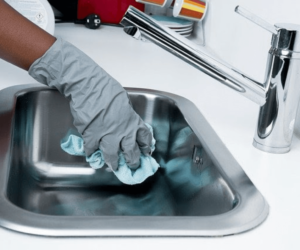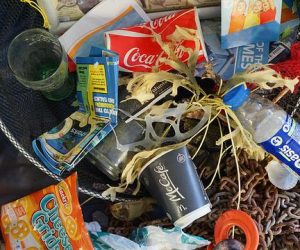In the heart of every household, the washing machine stands as a crucial appliance, ensuring clean and fresh laundry. When this trusty companion encounters issues, venturing into the world of appliance repair Barrie offers a cost-effective and empowering solution. This comprehensive guide will navigate you through the intricacies of DIY Barrie washing machine repair, providing the knowledge and confidence to troubleshoot and rejuvenate your laundry companion.
Understanding the Importance of Appliance Repair
Washing machines play an integral role in our daily lives, streamlining the laundry process and contributing to the overall efficiency of a household. When faced with malfunctions such as leaks, unusual noises, or spinning issues, engaging in appliance repair becomes not just a cost-effective choice but also a means of maintaining the seamless flow of household tasks. Repairing your Barrie washing machine at home allows you to take control of your laundry routine while saving money.

DIY Barrie Washing Machine Repair: A Step-by-Step Guide
Note: Before starting any washing machine repair, disconnect the power source and ensure that the appliance is safe to work on.
Leaking Water:
- Check Water Inlet Valve:
- Locate the water inlet valve at the back of the machine.
- Inspect for leaks and replace the valve if necessary.
- Inspect Door Seal:
- Examine the door seal for visible damage or wear.
- Replace the door seal if there are signs of deterioration.
- Tighten Hose Connections:
- Ensure that hose connections are secure and tightened if necessary.
Unusual Noises During Operation:
- Inspect Pump:
- Access the pump at the bottom of the machine.
- Remove any foreign objects causing noise.
- Tighten Screws and Bolts:
- Check the exterior of the machine for loose screws or bolts.
- Tighten any components that may be contributing to noise.
- Check Drum Bearings:
- Test the drum bearings for wear by rotating the drum.
- Replace bearings if there is resistance or unusual sounds.
Drum Not Spinning:
- Inspect Drive Belt:
- Access the drive belt at the back of the machine.
- Check for signs of wear or damage and replace if necessary.
- Check Motor Coupling:
- Access the motor coupling between the motor and transmission.
- Replace the coupling if there is visible damage.
- Test Lid Switch:
- Locate the lid switch on the machine’s top or side.
- Test the switch for functionality and replace it if unresponsive.
Issues with Agitation:
- Check Agitator for Obstructions:
- Remove the agitator cap and inspect for obstructions.
- Clean any debris that may be hindering agitation.
- Inspect Agitator Dogs:
- Remove the agitator and inspect the agitator dogs.
- Replace them if there are signs of wear.
- Ensure Agitator is Secure:
- Tighten any bolts or fasteners securing the agitator.
Machine Overflows:
- Check Water Level Pressure Switch:
- Locate the water level pressure switch inside the control panel.
- Test the switch for proper functioning and replace it if needed.
- Inspect Inlet Valve:
- Access the inlet valve at the back of the machine.
- Check for blockages and clean if necessary.
- Verify Hose Connected to Pressure Switch:
- Ensure the hose connected to the pressure switch is clear and unobstructed.
Foul Smells from the Machine:
- Clean Detergent Dispenser:
- Remove the detergent dispenser and clean any residue.
- Ensure there is no buildup affecting machine performance.
- Run Vinegar Cycle:
- Run a hot water cycle with vinegar to eliminate odors.
- Vinegar helps break down detergent and fabric softener residues.
- Ensure Proper Ventilation:
- Leave the washing machine door ajar when not in use.
- Allow proper ventilation to prevent the growth of mold and mildew.
Pro Tips for Successful DIY Washing Machine Repair
Regular Maintenance Checks:
- Conduct regular inspections of key components to catch issues early.
- This includes belts, hoses, and seals.
Use Manufacturer Resources:
- Refer to the washing machine’s manual or the manufacturer’s website for specific troubleshooting tips.
- Manufacturers often provide valuable information on common issues and solutions.
Invest in Diagnostic Tools:
- Acquire basic diagnostic tools such as a multimeter and screwdrivers.
- These tools aid in accurate diagnosis and efficient repairs.
Check Warranty Coverage:
- Before attempting any repairs, check if the washing machine is still under warranty.
- Some repairs may be covered by the manufacturer.
Utilize Online Resources:
- Explore online forums, video tutorials, and DIY repair websites.
- These platforms offer additional insights and real-time guidance.
Prioritize Safety:
- Always disconnect the washing machine from power before starting any repairs.
- Use safety gear such as gloves and safety glasses when working on the appliance.
Empowering Your Laundry Routine
Embarking on the journey of DIY Barrie washing machine repair not only saves money but also grants you the satisfaction of resolving issues on your own. By following this comprehensive guide and incorporating additional tips, you can navigate the intricacies of washing machine repair with confidence. Whether it’s addressing leaks, unusual noises, or agitation problems, the realm of DIY appliance repair awaits, offering a cost-effective and empowering approach to laundry maintenance.



